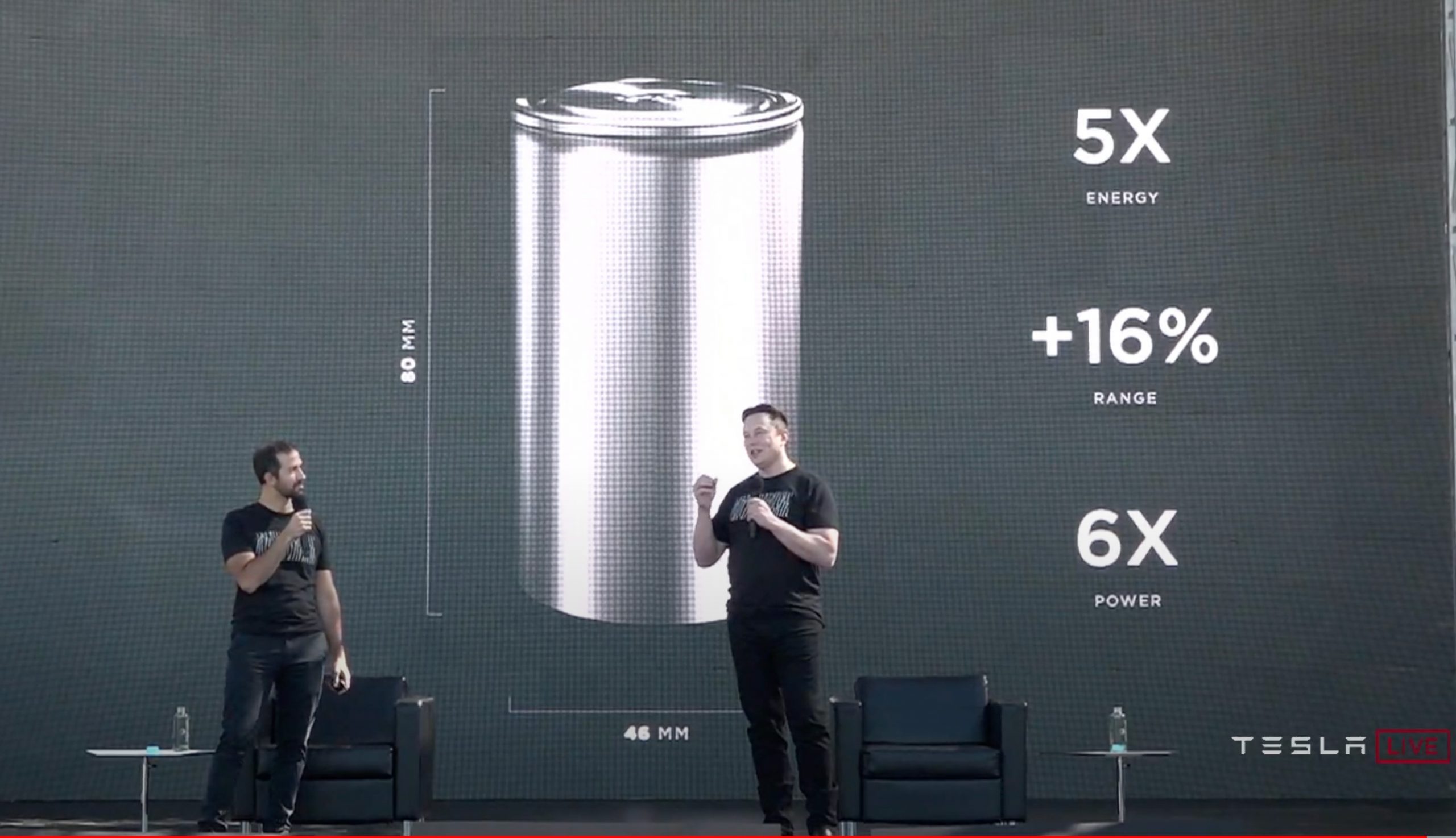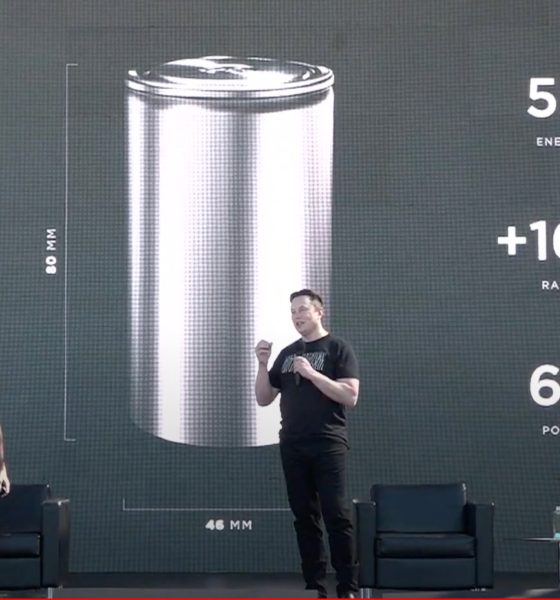Tesla quietly revealed in its Q1 report that nearly half the vehicles it produced in the first quarter of 2022 were equipped with cobalt-free lithium iron phosphate (LFP) batteries. The news, however, was overshadowed in the news cycle, particularly by Tesla’s $19 billion revenue and CEO Elon Musk’s acquisition of social media platform Twitter.
LFP batteries are not a new innovation, but it has not been used as much in areas outside China. According to data from Benchmark Mineral Intelligence (BMI), only 3% of electric vehicle batteries in the United States and Canada and 6% in the European Union are iron-based. In China, however, LFP batteries command 44% of the EV market.
Tesla currently uses LFP batteries in its base vehicles, though Elon Musk has hinted that the EV company will be using more cobalt-free cells in more products. Considering the prolific nature of Tesla and its influence on the market, it would not be surprising if other EV makers also began exploring the option of using LFP batteries for their own cars.
Amusingly enough, by playing a notable part in LFP battery adoption, it appears that Elon Musk has effectively become an “iron man” of sorts.
According to a Reuters review of the EV market, Tesla is not alone in its support for LFP batteries. Over a dozen companies are reportedly considering building LFP battery cell plants in the United States and Europe in the next three years. And things will likely only pick up from there. Mujeeb Ijaz, the founder of US battery startup Our Next Energy, noted that LFP has a future in the EV industry.
“I think lithium iron phosphate has a new life. It has a clear and long-term advantage for the electric vehicle industry,” he said.
There was a reason why LFP batteries took this long to gain ground. While LFP cells use cheaper materials, and while they could be consistently charged fully without much degradation, they tend to be larger, heavier, and generally hold less energy than nickel-cobalt-manganese (NCM) cells. Thus, electric cars that use LFP batteries tend to have shorter range.
Tesla’s decision to use LFP batteries for its base vehicles could be considered a strategic move. Since the company is electively the undisputed leader in the electric vehicle sector, the roughly 150,000 cars it produced last quarter that were equipped with LFP batteries took a number of analysts and specialists by surprise. And similar to other innovations from the company, such as its use of megacasts, it appears that other carmakers will soon be following suit.
EV startup Fisker, for one, noted that it is planning on using LFP batteries for its lower-range SUVs. CEO Henrik Fisker noted that the company is in discussions with battery suppliers from the United States, Canada, or Mexico. Fisker noted that LFP batteries are perfect for vehicles that are used by city-dwellers.
“If I never leave Los Angeles, I never leave San Francisco, I never leave London … I think that’s where LFP comes in really well,” he said.
Audi CEO Markus Duesmann, in comments that were shared last March, also spoke highly of LFP cells’ potential. “It may well be that we will see LFP in a larger portion of the fleet in the medium term. After the war, a new situation will emerge; we will adapt to that and choose battery technologies and specifications accordingly,” he said.
Even BMW, which is arguably lagging in the electric vehicle race considering the pace of rivals such as Volkswagen and Daimler, is looking towards LFP batteries. Recent comments from BMW chief procurement officer Joachim Post indicated that the German automaker was analyzing the merits of iron-based cells. “We’re looking at different technologies to minimize the use of resources and also we’re looking at optimizing chemistry,” the executive said.
*Quotes courtesy of Reuters.
Don’t hesitate to contact us with news tips. Just send a message to simon@teslarati.com to give us a heads up.

Elon Musk
Tesla’s Elon Musk gives timeframe for FSD’s release in UAE
Provided that Musk’s timeframe proves accurate, FSD would be able to start saturating the Middle East, starting with the UAE, next year.

Tesla CEO Elon Musk stated on Monday that Full Self-Driving (Supervised) could launch in the United Arab Emirates (UAE) as soon as January 2026.
Provided that Musk’s timeframe proves accurate, FSD would be able to start saturating the Middle East, starting with the UAE, next year.
Musk’s estimate
In a post on X, UAE-based political analyst Ahmed Sharif Al Amiri asked Musk when FSD would arrive in the country, quoting an earlier post where the CEO encouraged users to try out FSD for themselves. Musk responded directly to the analyst’s inquiry.
“Hopefully, next month,” Musk wrote. The exchange attracted a lot of attention, with numerous X users sharing their excitement at the idea of FSD being brought to a new country. FSD (Supervised), after all, would likely allow hands-off highway driving, urban navigation, and parking under driver oversight in traffic-heavy cities such as Dubai and Abu Dhabi.
Musk’s comments about FSD’s arrival in the UAE were posted following his visit to the Middle Eastern country. Over the weekend, images were shared online of Musk meeting with UAE Defense Minister, Deputy Prime Minister, and Dubai Crown Prince HH Sheikh Hamdan bin Mohammed. Musk also posted a supportive message about the country, posting “UAE rocks!” on X.
FSD recognition
FSD has been getting quite a lot of support from foreign media outlets. FSD (Supervised) earned high marks from Germany’s largest car magazine, Auto Bild, during a test in Berlin’s challenging urban environment. The demonstration highlighted the system’s ability to handle dense traffic, construction sites, pedestrian crossings, and narrow streets with smooth, confident decision-making.
Journalist Robin Hornig was particularly struck by FSD’s superior perception and tireless attention, stating: “Tesla FSD Supervised sees more than I do. It doesn’t get distracted and never gets tired. I like to think I’m a good driver, but I can’t match this system’s all-around vision. It’s at its best when both work together: my experience and the Tesla’s constant attention.” Only one intervention was needed when the system misread a route, showcasing its maturity while relying on vision-only sensors and over-the-air learning.
News
Tesla quietly flexes FSD’s reliability amid Waymo blackout in San Francisco
“Tesla Robotaxis were unaffected by the SF power outage,” Musk wrote in his post.

Tesla highlighted its Full Self-Driving (Supervised) system’s robustness this week by sharing dashcam footage of a vehicle in FSD navigating pitch-black San Francisco streets during the city’s widespread power outage.
While Waymo’s robotaxis stalled and caused traffic jams, Tesla’s vision-only approach kept operating seamlessly without remote intervention. Elon Musk amplified the clip, highlighting the contrast between the two systems.
Tesla FSD handles total darkness
The @Tesla_AI account posted a video from a Model Y operating on FSD during San Francisco’s blackout. As could be seen in the video, streetlights, traffic signals, and surrounding illumination were completely out, but the vehicle drove confidently and cautiously, just like a proficient human driver.
Musk reposted the clip, adding context to reports of Waymo vehicles struggling in the same conditions. “Tesla Robotaxis were unaffected by the SF power outage,” Musk wrote in his post.
Musk and the Tesla AI team’s posts highlight the idea that FSD operates a lot like any experienced human driver. Since the system does not rely on a variety of sensors and a complicated symphony of factors, vehicles could technically navigate challenging circumstances as they emerge. This definitely seemed to be the case in San Francisco.
Waymo’s blackout struggles
Waymo faced scrutiny after multiple self-driving Jaguar I-PACE taxis stopped functioning during the blackout, blocking lanes, causing traffic jams, and requiring manual retrieval. Videos shared during the power outage showed fleets of Waymo vehicles just stopping in the middle of the road, seemingly confused about what to do when the lights go out.
In a comment, Waymo stated that its vehicles treat nonfunctional signals as four-way stops, but “the sheer scale of the outage led to instances where vehicles remained stationary longer than usual to confirm the state of the affected intersections. This contributed to traffic friction during the height of the congestion.”
A company spokesperson also shared some thoughts about the incidents. “Yesterday’s power outage was a widespread event that caused gridlock across San Francisco, with non-functioning traffic signals and transit disruptions. While the failure of the utility infrastructure was significant, we are committed to ensuring our technology adjusts to traffic flow during such events,” the Waymo spokesperson stated, adding that it is “focused on rapidly integrating the lessons learned from this event, and are committed to earning and maintaining the trust of the communities we serve every day.”
News
Waymo scrutinized after self-driving taxis cause traffic jams during SF blackout
It’s not farfetched to speculate that it would have been a doomsday scenario for Tesla had FSD behaved this way.

A power outage across San Francisco over the weekend forced numerous Waymo self-driving taxis to stop at darkened intersections and cause traffic blockages in multiple locations across the city. The disruption left riders stranded, frustrated drivers blocked, and city officials stepping in as the Alphabet-owned company temporarily suspended service amid the widespread gridlock.
Needless to say, it would likely have been a doomsday scenario for Tesla had FSD behaved in a similar way, especially if fleets of its robotaxis blocked traffic for numerous drivers.
Power outage halts Waymo fleet
The outage knocked out electricity for tens of thousands of customers, leaving traffic signals dark across large parts of the city, as noted in a report from the New York Times. Waymo vehicles began stopping at intersections and remained stationary for extended periods, seemingly unable to operate. Tow truck operators worked through the night removing immobilized vehicles, while videos circulated online showing Waymos with hazard lights flashing as traffic backed up around them.
Waymo later confirmed that it had paused its Bay Area ride-hailing service after the San Francisco mayor’s office contacted the company about the congestion its vehicles were contributing to. Service began coming back online shortly after 3:30 p.m. local time, though some users still reported being unable to request rides. Waymo maintained that no injuries or accidents were reported during the outage.
Autonomous cars during emergencies
The incident surprised industry observers since autonomous vehicles are designed to function during signal outages and temporary connectivity losses. Waymo stated that its vehicles treat nonfunctional signals as four-way stops, but “the sheer scale of the outage led to instances where vehicles remained stationary longer than usual to confirm the state of the affected intersections. This contributed to traffic friction during the height of the congestion.” Experts suggested the problem may have been linked to the vehicles’ reliance on remote assistance teams, which help resolve complex situations the cars cannot handle independently.
“Yesterday’s power outage was a widespread event that caused gridlock across San Francisco, with non-functioning traffic signals and transit disruptions. While the failure of the utility infrastructure was significant, we are committed to ensuring our technology adjusts to traffic flow during such events,” the Waymo spokesperson stated, adding that it is “focused on rapidly integrating the lessons learned from this event, and are committed to earning and maintaining the trust of the communities we serve every day.”










